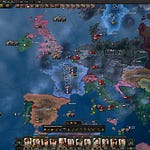Viktor Kossakovsky is a documentarian. His films include Aquarela and Gunda. Some time ago, Kossakovsky proposed his 10 Rules for Filmmakers.
I saw Kossakovsky speak a few years ago at the Museum of the Moving Image and both his film, Aquarela, and his rules left quite an impression on me. They are auteurial, pushing for independence and clarity in his creative vision. They challenge one’s perception of what it is to create a film. They are as follows:
Don’t film if you can live without filming.
Don’t film if you want to say something – just say it or write it. Film only if you want to show something, or you want people to see something. This concerns both the film as a whole and every single shot within the film.
Don’t film if you already knew your message before filming – just become a teacher. Don’t try to save the world. Don’t try to change the world. Better if your film will change you. Discover both the world and yourself whilst filming.
Don’t film something you just hate. Don’t film something you just love. Film when you aren’t sure if you hate it or love it. Doubts are crucial for making art. Film when you hate and love at the same time.
You need your brain both before and after filming, but don’t use your brain during filming. Just film using your instinct and intuition.
Try to not force people to repeat an action or words. Life is unrepeatable and unpredictable. Wait, look, feel and be ready to film using your own way of filming. Remember that the very best films are unrepeatable. Remember that the very best films were based on unrepeatable shots. Remember that the very best shots capture unrepeatable moments of life with an unrepeatable way of filming.
Shots are the basis of cinema. Remember that cinema was invented as one single shot—without any story. Or story was just inside that shot. Shots must first and foremost provide the viewers with new impressions that they never had before.
Story is important, but perception is even more important. Think, first, what the viewers will feel while seeing your shots. Then, form a dramatic structure of your film using the changes to their feelings.
Documentary is the only art where every esthetical element almost always has ethical aspects and every ethical aspect can be used esthetically. Try to remain human, especially whilst editing your films. Maybe, nice people should not make documentaries.
Don’t follow my rules. Find your own rules. There is always something that only you can film and nobody else.
After reflecting on his rules, I decided to present them to my students as an exercise. I had them translate Kossakovsky’s provocations into “10 Rules for Game Designers.” The results were interesting and each student had their own interpretation. So I thought this would be a good space to attempt the exercise for your humble alchemists. You can listen to us chewing through them in our latest episode of The Hypothesis.
10 Rules for Game Designers
Don’t design a game if you can live without designing it. Make a game that needs to be made. Only make a game if there’s something about you that needs to make that game. You must be making a game that you must make.
Make a game if you want people to interact with something. Never forget that your game design is creating a game. Games are played. Never forget that you are designing a game to be played. This concerns every rule, choice, interaction as well as the game as a whole.
Playtest early and often. While playtesting, allow the results to delete your intentions and allow the game to be different than what you set out with. The system only sings in play.
Design games when you are knowledgeable and ignorant at the same time. Make a game that you don’t already have a judgement about. Make games about things you feel passionately about but you’re still exploring. You can’t know everything about a thing. Leave space to explore and learn about a thing. Be thou not a fanboi.
Don’t use your brain during game design. Use your brain during planning and reflection. During game design focus on your intuition.
Games is about vibes. Allow inspiration to carry you. You must plan and reflect and iterate, but do that before and after the act of creation. What is the heart that I want to put into this design?Don’t force people to make choices that aren’t meaningful. Game play is unpredictable and unrepeatable. The uncertainty of play is a reflection of the uncertainty of life. Things in a game are unrepeatable because of chance and discovery. Your game design is not complete if it does not provide meaningful choices. Don’t force your players into an interaction. The best game play is made up of unrepeatable moments.
Rules are the basis of games. Interaction is the playing of games. Remember, games can arise from a single rule. Rules must first and foremost must provide the players with new interactions.
System is important, but experience is even more important. Think, first, what the players will feel while playing your game. Then, form a systemic structure of your game using the changes to their feelings. The experience of your game only exists in the impressions of your players. You must understand the players’ experiences of your rules before you can structure the systems to present them to the players to be interacted with.
Game making is an aesthetical art-form that has psychological aspects and every psychological aspect can be used aesthetically. Try to remain human while crafting your players’ experiences. Maybe nice people should not make games.
Don’t follow our rules. Find your own. You have a game in you. Find the game that only you can design. There’s always play that only you can design.
Those are our interpretations of Kossakovsky’s rules.
What are your 10 Rules for Game Design?
Technical note for our listeners: Recording this episode seems to have triggered some mild curse. Christopher appears to have angered some kami of audio, a gremlin of podcasting. Thus the recording required two attempts over the course of three months, and this was the best we could do. That said, the audio quality is not up to our usual standards. Before we record our next episode, we’ll burn some sage in the corners of Christopher’s house to drive the devils out.


















Share this post